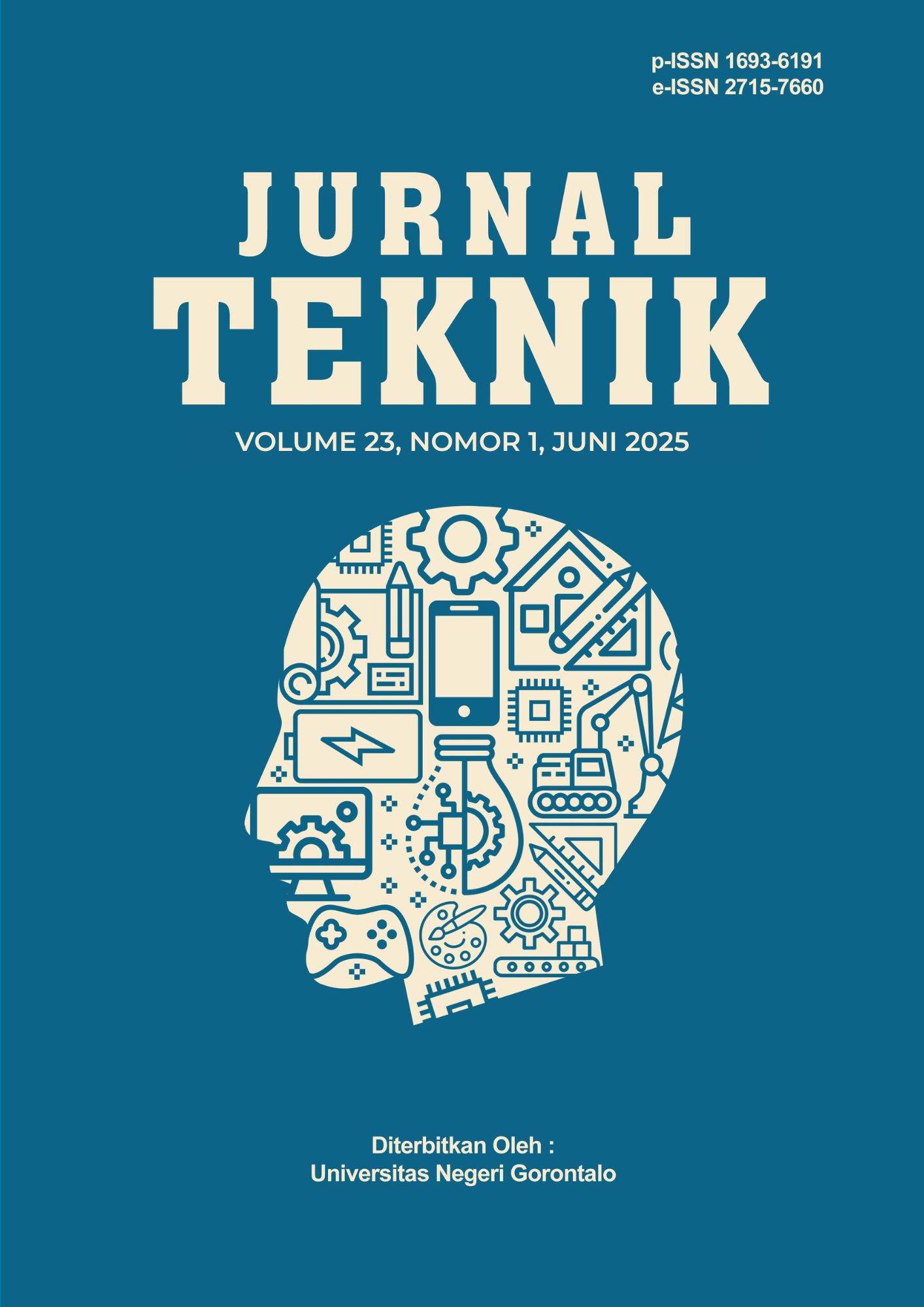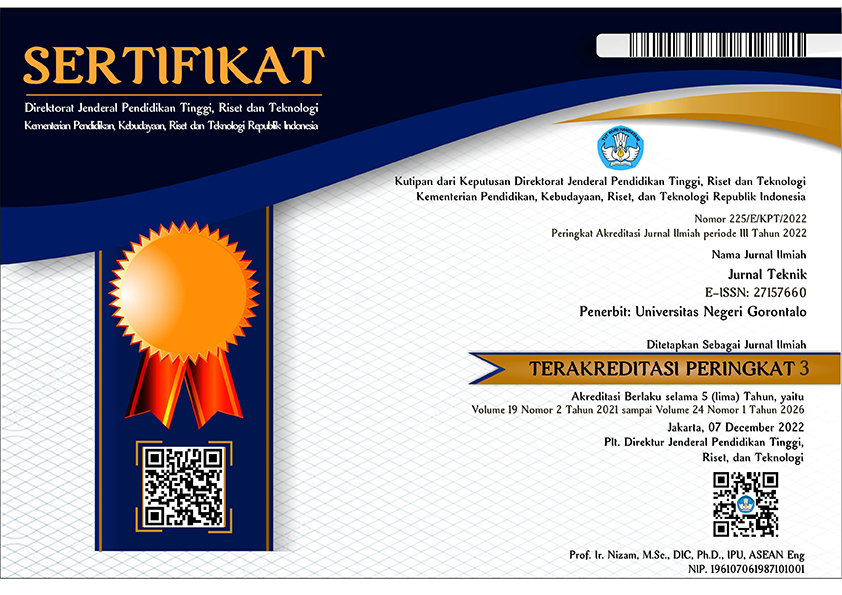Thermal Comfort Determines User Subjectivity in Lamongan Grand Mosque
Abstract
Mosque is a place of worship, which requires comfort to enhance the quality of worship, thermal comfort being one of the considerations in the prayer space of the mosque. This study aims to analyze the level of thermal comfort and thermal preferences of users in the interior space of the Grand Mosque of Lamongan. The method used is quantitative, collecting data through surveys at the Grand Mosque of Lamongan. Some of the data collected include personal data (clothing and activities) and measurements of environmental parameters; air temperature, air humidity, and wind speed. At the same time, users were asked to fill out a questionnaire asking about their perceived level of comfort at that time. The results of the study show that the interior space of the mosque has an average temperature ranging from 28.4 ºC to 29.08 ºC, while the survey questionnaire results indicate that 89.1% of respondents can accept the existing thermal conditions. This may be due to the fact that the temperature inside the mosque is much lower compared to the outdoor temperature.
Downloads
References
Absar Alam, Md., Kumar, R., Yadav, A. S., Arya, R. K., & Singh, V. P. (2023). Recent developments trends in HVAC (heating, ventilation, and air-conditioning) systems: A comprehensive review. Materials Today: Proceedings. doi:10.1016/j.matpr.2023.01.357
Agustapraja, H. R. (2018). Studi Pemetaan Perilaku (Behavioral Mapping) Pejalan Kaki Pada Pedestrian Alun-Alun Kota Lamongan. Jurnal CIVILA, 3(1), 134. doi:10.30736/cvl.v3i1.220
Agustapraja, H. R. (2019). Tipologi arsitektur masjid agung lamongan sebagai kearifan budaya tradisional. Seminar Nasional Sistem Informasi 2019, 1744–1753. Retrieved from https://jurnalfti.unmer.ac.id/index.php/senasif/article/view/238
Agustapraja, H. R., & Aslamiyah, S. S. (2022). THE IDENTIFICATION OF THE PATTERN OF JAVA ISLAMIC CITY CATUR GATRA TUNGGAL IN LAMONGAN. Journal of Islamic Architecture, 7(1), 67–72. doi:10.18860/jia.v7i1.13263
Agustapraja, H. R., & Maulidina, Y. (2019). Morfologi Arsitektur Dan Transformasi Fisik Masjid Agung Lamongan. Jurnal Teknika, 11(2), 1104. doi:10.30736/jt.v11i2.340
Agustapraja, H. R., & Wahab, I. B. A. (2023). Studying the Human Scale and Proportionality of Great Mosque in Jawa Timur, Indonesia. Journal of Islamic Architecture, 7(3), 427–436. doi:10.18860/jia.v7i3.17382
Bucur, M. (2021). Studies on the Use of ISO 7730 in Romanian Companies. In The 14th International Conference on Interdisciplinarity in Engineering—INTER-ENG 2020 (p. 63). Basel Switzerland: MDPI. doi:10.3390/proceedings2020063063
Buratti, C., & Ricciardi, P. (2009). Adaptive analysis of thermal comfort in university classrooms: Correlation between experimental data and mathematical models. Building and Environment, 44(4), 674–687. doi:10.1016/j.buildenv.2008.06.001
Corgnati, S. P., Ansaldi, R., & Filippi, M. (2009). Thermal comfort in Italian classrooms under free running conditions during mid seasons: Assessment through objective and subjective approaches. Building and Environment, 44(4), 785–792. doi:10.1016/j.buildenv.2008.05.023
Hadi, Y., Azaria, T., . P., Putrianto, N. K., Oktiarso, T., Ekawati, Y., & Noya, S. (2020). Analisis Kenyamanan Termal Ruang Kuliah. Jurnal METRIS, 21(01), 13–26. doi:10.25170/metris.v21i01.2428
Hamzah, B., Ishak, M. T., Beddu, S., & Osman, M. Y. (2016). Thermal comfort analyses of naturally ventilated university classrooms. Structural Survey, 34(4/5), 427–445. doi:10.1108/SS-12-2015-0055
Hamzah, B., Kusno, A., & Mulyadi, R. (2019). Design of energy efficient and thermally comfortable air-conditioned university classrooms in the tropics. International Journal of Sustainable Energy, 38(4), 382–397. doi:10.1080/14786451.2018.1539394
Hamzah, B., Mulyadi, R., & Amin, S. (2016). Analisis Kenyamanan Termal Ruang Kelas Sekolah Dasar di Kota Makassar Studi Kasus SD Unggulan Toddopuli. Prosiding Temu Ilmiah IPLBI, (1), 1–6.
Hidayatullah, M. S., Agustapraja, H. R., Kartikasari, D., & Affandy, N. A. (2022). Preservation of the Architecture Of Jami’ Gresik Mosque As A Guardian Of The Historic Image Of Gresik City Spiritual Place. In Proceedings of the 1stInternational Conference on Environmental Health, Socioeconomic and Technology (Vol. 01, pp. 70–83). Retrieved from https://conference.unisla.ac.id/index.php/icehst/
Jing, S., Lei, Y., Song, C., & Wang, F. (2024). Information entropy analysis of the relation between climate and thermal adaptation: A case study in hot summer and cold winter region of China. Urban Climate, 55, 101881. doi:10.1016/j.uclim.2024.101881
Latif, S., Rahim, R., & Hamzah, B. (2016). Analisis Kenyamanan Termal Siswa di Dalam Ruang Kelas - Studi Kasus SD Inpres Tamalanrea IV Makassar, (1970), 466–473.
Pang, Z., Chen, Y., Zhang, J., O’Neill, Z., Cheng, H., & Dong, B. (2020). Nationwide HVAC energy-saving potential quantification for office buildings with occupant-centric controls in various climates. Applied Energy, 279, 115727. doi:10.1016/j.apenergy.2020.115727
Prasetia, A. K., & Nugrahaini, F. T. (2020). Kenyamanan termal pada masjid baitul makmur pabelan. SIAR (Seminar Ilmiah Arsitektur), 8686, 597–600.
Rajkumarsingh, B., Ah King, R. T. F., & Joomun, K. A. (2024). Quantitative Assessment of Models and Indices for Interior Thermal Comfort Taking Into Account the Effects of Solar Radiation and Wind. In Artificial Intelligence, Engineering Systems and Sustainable Development (pp. 145–155). Emerald Publishing Limited. doi:10.1108/978-1-83753-540-820241011
Sirhan, N., & Golan, S. (2021). Efficient PMV computation for public environments with transient populations. Energy and Buildings, 231, 110523. doi:10.1016/j.enbuild.2020.110523
Sugini, D. (2014). Kenyamanan termal ruang [Room thermal comfort]. Yogyakarta: Graha Ilmu.
Syamsiyah, N. R., & Nur Izzati, H. (2021). Strategi Kenyamanan Termal Masjid Al-Kautsar Kertonatan, Kartasura, Sukoharjo. Langkau Betang: Jurnal Arsitektur, 8(2), 98. doi:10.26418/lantang.v8i2.45792
Teli, D., Jentsch, M. F., James, P. A. B., & Bahaj, A. B. S. (2012). Field study on thermal comfort in a UK primary school. Proceedings of 7th Windsor Conference: The Changing Context of Comfort in an Unpredictable World, 7730(April), 12–15.
ter Mors, S., Hensen, J. L. M., Loomans, M. G. L. C., & Boerstra, A. C. (2011). Adaptive thermal comfort in primary school classrooms: Creating and validating PMV-based comfort charts. Building and Environment, 46(12), 2454–2461. doi:10.1016/j.buildenv.2011.05.025
Udrea, I., Gheorghe, V. I., Cartal, L. A., Duminica, D., Petrache, S., Apostolescu, T. C., & Kraus, V. F. (2020). IoT solution for monitoring indoor climate parameters in open space offices. E3S Web of Conferences, 180, 02012. doi:10.1051/e3sconf/202018002012
Willyanto, E. (2017). Pengaruh Desain Arsitektural terhadap Kenyamanan Termal Bangunan Beriklim Tropis Lembab.
Wong, N. H., & Khoo, S. S. (2003). Thermal comfort in classrooms in the tropics. Energy and Buildings, 35(4), 337–351. doi:10.1016/S0378-7788(02)00109-3
Xiao, A., Cheng, B., Zhang, J., Peng, H., Lai, Y., Zeng, F., … Zhu, F. (2024). A study of acoustic-light-thermal effects on pedestrians’ overall comfort in a Cfa-climate campus during the summer. Journal of Thermal Biology, 121, 103839. doi:10.1016/j.jtherbio.2024.103839
Yang, L., Wang, F., Zhao, S., Gao, S., Yan, H., Sun, Z., … Zhai, Y. (2024). Comparative analysis of indoor thermal environment characteristics and occupants’ adaptability: Insights from ASHRAE RP-884 and the Chinese thermal comfort database. Energy and Buildings, 309, 114033. doi:10.1016/j.enbuild.2024.114033
Copyright (c) 2025 Hammam Rofiqi Agustapraja, Izudinshah bin Abd Wahab, Alfin Bagas Digdaya (Author)

This work is licensed under a Creative Commons Attribution-ShareAlike 4.0 International License.













